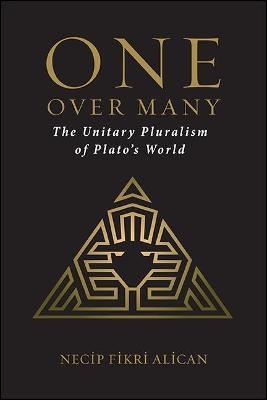
One over Many
State University of New York Press (Verlag)
978-1-4384-8564-5 (ISBN)
Finalist for the 2022 PROSE Award in the Philosophy category presented by the Association of American Publishers
One over Many is a groundbreaking interpretation of Plato's philosophical outlook, solving longstanding problems in the scholarly literature. Its originality and its strength consist in replacing the metaphysical dualism of the traditional interpretation with the paradigm of unitary pluralism: one world with a gradation of reality, including three different types of Forms, as well as the entire spectrum of sensible phenomena, with intermediate ontological constructs in between. The model thus combines a monism of worlds with a pluralism of things, positing a unitary reality of infinite possibilities through ontological stratification. This tightly integrated collection of essays, conceived and developed by the author in pursuit of corrective intervention in Plato’s metaphysics, combines his previously published work with newly drafted material for the present volume. The book replaces the standard view of Plato as a metaphysical dualist with a novel interpretation providing greater explanatory power through the paradigm of unitary pluralism in a single reality built on ontological diversity.
Necip Fikri Alican is a philosopher specializing in ethics and metaphysics, both especially from a historical perspective.
Foreword: Exploring Plato's Forms
Nicholas D. Smith
Preface
Introduction
Chapter 1: Plato's World: The Standard Model
1.1 Introduction
1.2 Why Two Worlds?
1.3 What Are the Forms?
1.4 How Does It All Work?
1.5 Conclusion
Chapter 2: Rethinking Plato's Forms
2.1 Introduction
2.2 Stratification of Reality
2.3 A Two-Level Model
2.4 Classification of Forms
2.5 Terminological Clues and Methodological Observations
2.6 Ideal Forms
2.7 Conceptual Forms
2.8 Relational Forms
2.9 First Principles
2.10 Negative Forms?
2.11 Conclusion
Chapter 3: Rethought Forms: How Do They Work?
3.1 Introduction
3.2 The General Enterprise
3.3 The Stratification of Reality
3.4 The Classification of Forms
3.5 The Continuum of Abstraction
3.6 Conclusion
Chapter 4: A Horse Is a Horse, of Course, of Course, but What about Horseness?
4.1 Bunny in the Clouds
4.2 Horses and Horseness
4.3 Modes of Existence
4.4 Second Sailing
Chapter 5: Ontological Symmetry in Plato: Formless Things and Empty Forms
5.1 Introduction
5.2 The Evidence
5.3 Formless Things
5.4 Empty Forms
5.5 Conclusion
Chapter 6: The Good, the Bad, and the Ugly: Does Plato Make Room for Negative Forms in His Ontology?
6.1 The Question of Negative Forms in Plato
6.2 Embracing Negative Forms with Debra Nails
6.3 Rejecting Negative Forms with Holger Thesleff
6.4 The Semblance and Structure of Negativity in Plato
6.5 The Relevance and Supremacy of the Good in Plato
Chapter 7: Between a Form and a Hard Place: The Problem of Intermediates in Plato
7.1 Introduction
7.2 Plato through Aristotle
7.3 Aristotle as Historian
7.4 Discrepancies and Contradictions
7.5 Implications for Reliability
7.6 Plato through Plato
7.7 Conclusion
Works Cited
Index
| Erscheinungsdatum | 18.03.2022 |
|---|---|
| Reihe/Serie | SUNY series in Ancient Greek Philosophy |
| Zusatzinfo | Total Illustrations: 0 |
| Verlagsort | Albany, NY |
| Sprache | englisch |
| Maße | 152 x 229 mm |
| Gewicht | 227 g |
| Themenwelt | Geisteswissenschaften ► Philosophie ► Erkenntnistheorie / Wissenschaftstheorie |
| Geisteswissenschaften ► Philosophie ► Metaphysik / Ontologie | |
| Geisteswissenschaften ► Philosophie ► Philosophie Altertum / Antike | |
| ISBN-10 | 1-4384-8564-6 / 1438485646 |
| ISBN-13 | 978-1-4384-8564-5 / 9781438485645 |
| Zustand | Neuware |
| Haben Sie eine Frage zum Produkt? |
aus dem Bereich


![Was heißt Denken?. Vorlesung Wintersemester 1951/52. [Was bedeutet das alles?] - Martin Heidegger](/media/113619842)